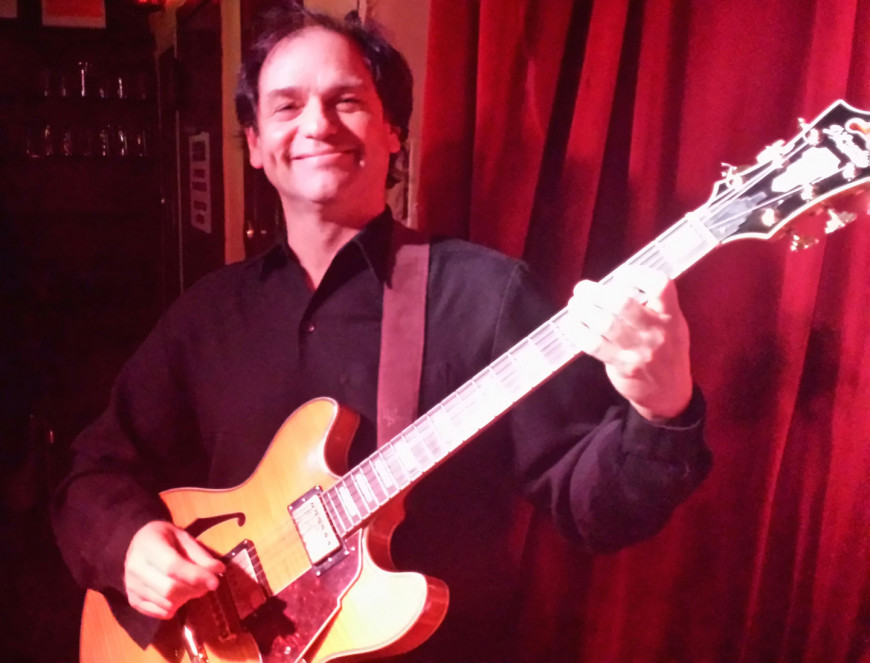Fretboard Harmony

I first came up with my concept for Fretboard Harmony when I was asked to teach a course by that name for the Berklee Guitar Sessions Program. I agreed to teach the course, and then realized I had no idea what that meant: How was fretboard harmony different than regular harmony? I thought about this, and decided to examine how harmony presents itself on the guitar.
On the piano it’s pretty obvious, you move to the right, the notes get high and to the left they get lower, so all the intervals present themselves simply by counting up each required amount to the right. For example, a perfect fourth is five half-steps, so simply start on any note and move up to the right five keys and you’ll have a perfect fourth. A triad is a minor third on top of a major third…and so on and so on.
The guitar moves in two ways: if you move up on the same string vertically the pitch gets higher, but also if you move horizontally to a higher pitched string the note gets higher….so it’s not so easy to see and figure out intervals and chords.
There is one thing that’s very obvious to all guitarists, the ‘capo effect” since all the strings are moving up vertically, if you play a formation in one area of the neck, whether it’s a chord or a scale, and then move it up, it will be the same chord or scale in whatever place you choose to start from.
So if you play an F chord on all the strings covering the lowest part of the neck, and then move it up two frets, (which is two half-steps) you’l get a G chord with the exact same interval structure as the F chord. Many guitarists learn in this manner, learning fingerings in one position and then just moving them up and down the neck to get to whatever key they want.
What many guitarists don’t know!!!
Because the strings are tuned to the same interval, ( except for the B string), whatever shape or formation you play between two strings will reproduce itself on the next two strings! So, if you play a Perfect 5th (or power chord!) on the bottom two strings,you can move that same shape over to the next two strings, and the same fingering will give you another perfect 5th, and then again to the next two strings! This can totally change your approach to playing the guitar: Instead of moving always across the neck horizontally from the bottom E string, now you can learn to use the same fingering in two-string patterns moving across the neck diagonally!
This approach can really help you to create some scales, arpeggios, and blues licks that move in a very fluid way. Just like a pianist who can rip off an arpeggio, using the same fingering in each octave, you’ll be able to rip off arpeggios and scales up and down the neck!
Please see my video below to see what this actually looks and sounds like!
